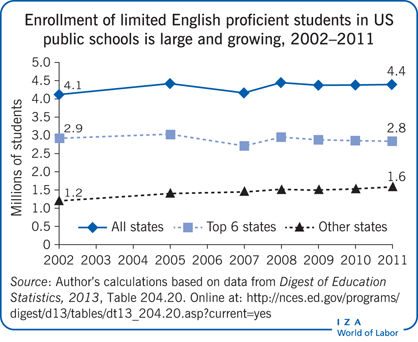Elevator pitch
More than 4.4 million students enrolled in US public schools participate in English language learner programs because of linguistic barriers to learning in regular classrooms. Whether native language instruction should be used in these programs is a contentious issue. Recent studies, using credible research designs for estimating causal impacts, find that bilingual education programs (which use some native language instruction) and English-only programs are not significantly different in their impact on standardized test performance. This finding suggests that it is time to change the focus from use of the native language to program quality.

Key findings
Pros
Bilingual education may help limited English proficient students keep up in other subjects while they learn English.
Bilingual education helps limited English proficient students develop language skills in their native (non-English) language.
Skills in students’ native language may facilitate their development of skills in English.
Bilingual education supports cultural inclusion and diversity.
Cons
By reducing exposure to English, bilingual education may slow the acquisition of English language skills.
A shortage of certified bilingual education teachers makes it difficult to implement bilingual education programs as intended.
Appropriate teaching and learning materials may not be available in all native languages.
Bilingual education segregates limited English proficient students from other students, which may have social and academic impacts.